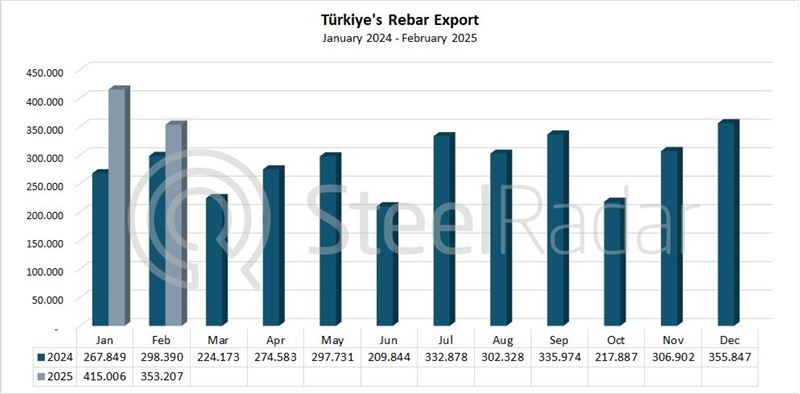Brazil's steel sector sees varied production trends
Brazil's steel production faced fluctuating figures, with cumulative crude steel production totaling 26.6 million tons, reflecting an 8.1% decrease compared to the same period last year. Rolled steel products dropped by 8.8% year-on-year to approximately 18 million tons, while semi-finished products witnessed a notable 19.4% increase, reaching around 8 million tons. These statistics highlight monthly and annual shifts, emphasizing the dynamic nature of the Brazilian steel industry.
Mexico's ascent in global steel consumption
Mexico, currently the 14th largest global steel producer, is poised to surpass Italy and secure the 9th position in global steel consumption by the end of 2023. The United States played a pivotal role in boosting Mexico's steel industry by exporting 3 million tons of ferrous scrap in 2022. In the first eight months of 2023, Mexico imported 1.66 million tons of ferrous scrap, underscoring the vital role the U.S. plays in meeting Mexico's growing demand for steel production materials.
US steel production and trade dynamics
The American Iron and Steel Institute (AISI) reported a minor decline in raw steel production for the week ending November 25, with 1.687 million short tons manufactured. The U.S. Department of Commerce's removal of anti-dumping duties on Ukrainian twisted wire signifies a shift in trade relations, potentially prompting a broader reassessment of the overall U.S.-Ukraine trade landscape.
Australia initiates review of anti-dumping measures
Australia has launched a second review of anti-dumping measures for hot-rolled structural steel sections from Japan, South Korea, Thailand, and Taiwan. The review, prompted by OneSteel Manufacturing Pty Ltd, will extend from October 1, 2022, to September 30, 2023, with potential implications for the global steel trade.
Challenges for US bulk scrap exporters
The fourth quarter has been challenging for U.S. bulk exporters due to market turbulence. U.S. exporters of bulk scrap face challenges due to rising shipping rates, exacerbated by congestion at the Panama Canal and limited vessel availability in Brazil. Prolonged transit times and increased demand from grain shippers are contributing to surging rates, impacting the profitability of U.S. bulk exporters. The evolving situation underscores the intricate challenges facing the industry amid dynamic global supply chain conditions.









Comments
No comment yet.